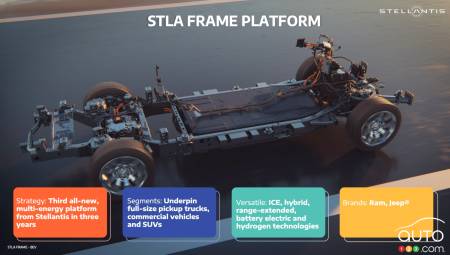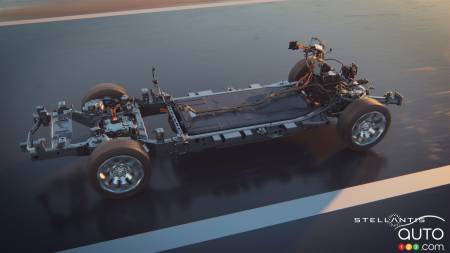We know that future electric vehicles from the Stellantis auto group will benefit from a new modular platform called STLA. Variants of this platform will be designed to meet different needs; one of those is the new STLA Frame just presented by the group.
The first models to be built using the new architecture will fly the Ram and Jeep flags. Adapted to the needs of the North American market in particular, but also of other regions of the world, the platform is optimized to offer power, robustness and performance, meeting the requirements of users of vehicles belonging to the pickup truck and SUV segments designed for off-road driving.
Range range range
What really catches the attention is the company's announcement of a range of 500 miles, or just over 800 km for the all-electric models. With electric products, but equipped with a range extender, the company is talking about 1100 km.

Maximum towing capacity will reach 6350 kg, or 14,000 lb. Payload capacity will be 1224 kg, or 2700 lb. The platform can allow vehicles to ford bodies of water up to 610 mm deep.
The ace up Stellantis’ sleeve with this new system is the flexibility of the STLA Frame structure. Initially, it was only intended to accommodate all-electric models, but adjustments were made and it is now adaptable for use with hybrid, internal combustion and even hydrogen powertrains, should the need arise.
Another advantage of the STLA Frame structure is its high-strength steel construction, which ensures durability while reducing weight. Its enlarged central structure protects the battery from side impacts, while a full fairing under the frame reduces drag, which improves aerodynamics, and in turn, range.
Fast-charging capabilities are equally impressive: 160 km in just 10 minutes, in optimal conditions of course.
The STLA Frame is part of Stellantis' Dare Forward 2030 strategy, which calls for massive electrification of the range with investments exceeding 50 billion euros. The vision is to achieve 100-percent electric vehicle sales in Europe and 50 percent in the U.S. by 2030.






